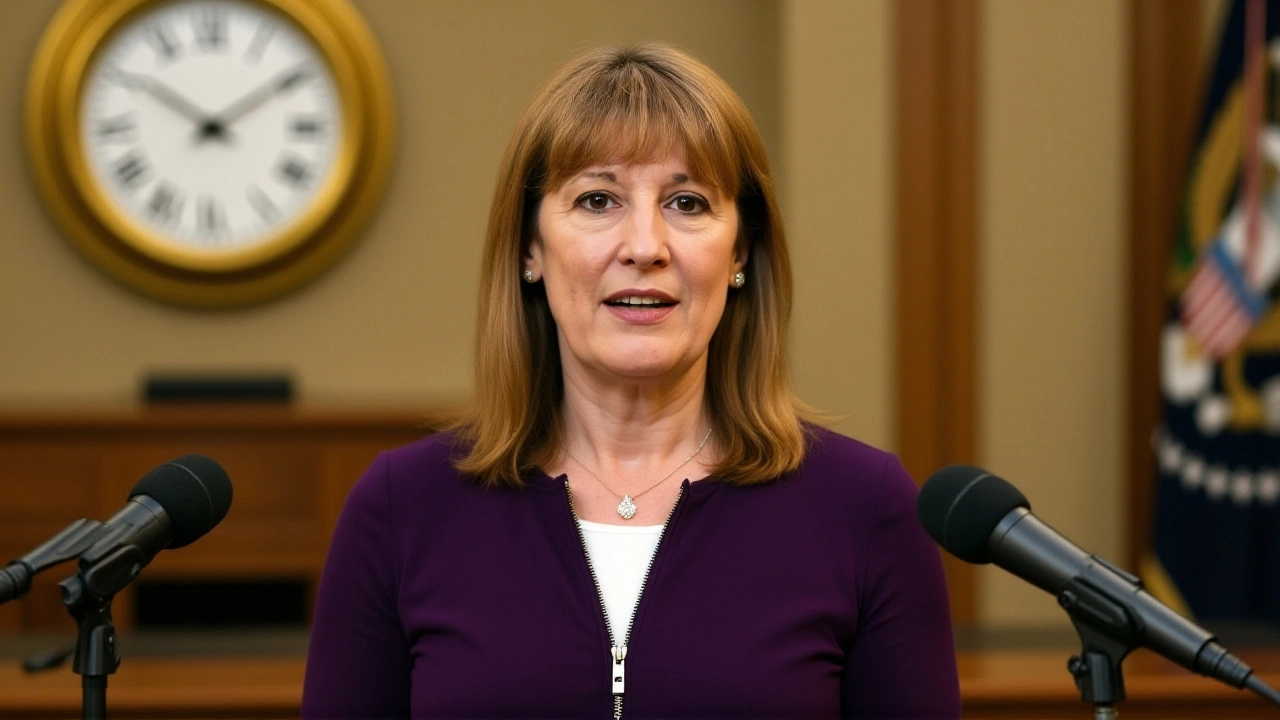UK State Pension to Jump 4.1% in April 2025 Thanks to Triple Lock

When the UK government rolls out its annual State Pension uplift in April, most retirees brace for a modest bump. This year, though, the headline number—4.1%—is far heftier than the 1.7% inflation rate that many expected.
From 1 April 2025, the full new State Pension climbs from £221.20 to £230.25 a week, while the older basic rate rises from £169.50 to £176.45. The surge stems from the "triple lock"—a formula that bumps pensions by the highest of earnings growth, CPI inflation, or 2.5%.
Here’s why it matters: roughly 5.5 million pensioners will see an extra £400 or more in their yearly income, but the boost isn’t even across the board. The mechanics, the numbers, and the fiscal fallout are worth a closer look.
How the Triple Lock Works
First introduced in 2010, the triple lock was suspended in 2022 and revived in 2023 after a contentious debate in Parliament. Its core rule is simple: each April, the State Pension is raised by whichever figure is biggest—average earnings growth, the Consumer Prices Index (CPI), or a guaranteed floor of 2.5%.
For the 2025 uplift, the Institute for Fiscal Studies (IFS) reported that average earnings grew 4.1% between May and July 2024, a rate confirmed in the Autumn Budget of that year. Since 4.1% outruns both CPI (1.7%) and the 2.5% minimum, it became the driver of this year’s increase.
Numbers Behind the Boost
According to Vinal K. Karania, Senior Research Manager at Age UK, the weekly rise translates into an annual gain of £471.62 for those on the new State Pension and £361.37 for basic-rate recipients.
- Full new State Pension: £221.20 → £230.25 per week.
- Basic State Pension: £169.50 → £176.45 per week.
- Annual increase for full-rate claimants: £471.62.
- Annual increase for basic-rate claimants: £361.37.
- Projected extra cost to the Treasury over five years: £10.7 billion.
Age UK’s October 2024 research note, titled "Debunking the myth that all pensioners will receive the full increase in State Pension amount from April 2025," breaks down the distribution:
- 52% (≈0.52 million) will see an uplift under £400.
- 41% (≈0.41 million) will receive between £300 and £400.
- 5% (≈0.05 million) will get less than £200.
That variation hinges on factors like pre‑2016 contracting‑out status, National Insurance (NI) record length, and any protected payments from the Additional State Pension.
Who Gains the Most – and Who Gets Less
People who built a full 35 years of NI contributions after April 2016 are most likely to hit the £230.25 weekly rate. Those who were contracted out before 2016 often need more than 35 qualifying years to reach the full new rate, because their earlier contributions went toward a different pension scheme.
Standard Life, a Edinburgh‑based financial services firm, explains that "protected payments"—extra sums for those who earned more under the old system—still rise with CPI, not the triple lock. Hence, while the base figure climbs on earnings, the extra protected layer lags behind.
In short, a retiree with a clean post‑2016 NI record enjoys the biggest jump, whereas legacy cases see a more modest uplift.
Official Reactions and Expert Views
Emily Jones, spokesperson for the Department for Work and Pensions, said, "The triple lock remains a cornerstone of our commitment to protect pensioners from the worst of rising costs. This year’s 4.1% rise reflects strong earnings growth and ensures retirees maintain their standard of living."
The IFS warned, however, that the policy “adds a substantial fiscal burden,” noting that the £10.7 billion extra spending over five years could pressure other public‑service budgets if earnings continue to outpace inflation.
Age UK’s Karania added, "While most pensioners will feel the relief of a higher weekly check, we must be transparent about the uneven distribution. Those on the lower end of the scale still face tight budgets, especially with energy costs remaining high."

Fiscal Implications for the Treasury
Under the current triple‑lock trajectory, the Department for Work and Pensions projects that State Pension spending will climb from £95 billion in 2024‑25 to roughly £106 billion by 2029‑30. That’s a steeper rise than if the lock had been tied solely to CPI.
Economists argue the higher outlay could force a reassessment of other welfare programmes, such as Pension Credit, which this year sees a statutory minimum rise of 6.70%—a jump that mirrors the triple‑lock effect on other benefits.
Critics also point out that the lock’s earnings component could create a feedback loop: higher wages boost pension payouts, which in turn increase disposable income, potentially fueling further wage growth.
What to Expect Next
Looking ahead to April 2026, the triple lock will again compare earnings growth, CPI, and the 2.5% floor. If earnings stay above inflation, pensioners can anticipate another double‑digit percent rise, but the Treasury has hinted at possible reforms aimed at capping the lock to safeguard fiscal stability.
Meanwhile, the DWP encourages anyone uncertain about how the new rates affect them to check their personal pension statement online or contact the helpline before the 1‑April deadline.
Frequently Asked Questions
How does the 4.1% increase affect pensioners on the basic State Pension?
Basic‑rate claimants see their weekly payment rise from £169.50 to £176.45, adding about £361 to their yearly income. While that’s a welcome lift, the amount remains lower than the new State Pension and varies depending on past NI contributions.
Why aren’t all pensioners getting the same boost?
The variation stems from differences in NI records, pre‑2016 contracting‑out, and whether someone receives a protected payment from the Additional State Pension. Those with full post‑2016 NI histories hit the full new rate, while legacy cases often receive a lower uplift.
What is the triple lock and why was it reinstated?
The triple lock guarantees State Pension rises by the highest of average earnings growth, CPI inflation, or 2.5%. It was suspended in 2022 over cost concerns but brought back in 2023 as the government pledged to protect pensioners from falling living standards.
How will the increase impact the UK’s public finances?
The Treasury estimates the earnings‑based uplift adds about £10.7 billion over the next five years, raising total State Pension spending to roughly £106 billion by 2029‑30. That extra outlay may pressure other welfare budgets unless the lock is adjusted.
What should pensioners do to confirm their new payment?
Anyone uncertain about their upcoming pension amount should log into the DWP’s online portal, review their personal pension statement, or call the dedicated helpline before 1 April 2025. The service can clarify how factors like protected payments or contracting‑out affect individual totals.






